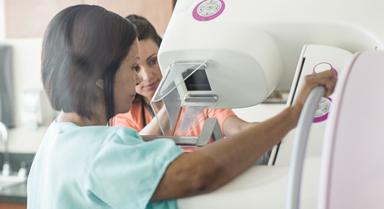In addition, gestational diabetes usually disappears after birth; however, both the mother and her child are at increased risk of type 2 diabetes in the future.2
Symptoms of type 2 diabetes include3: Increased thirst and dry mouth Increased and frequent urinationl blurred vision, lack of energy, slow healing wounds, frequent fungal infections in the skin Feeling tired and weak, and numbness or tingling in feet and hands.
Who is at risk?
Type 2 diabetes is frequently, but not always, linked to obesity.3 A diet high in fats and sugars and a low active lifestyle are risk factors for diabetes, as they both make it harder to maintain a healthy weight. In some cases, losing weight and maintaining a healthy lifestyle is enough to control the condition.
Type 2 is also more common in older people over the age of 45.4 Ethnicity is another key risk factor, as ethnic minority groups are often found to be at greater risk of developing type 2 diabetes.5
Treatment for diabetes
Treatment for type 2 diabetes varies depending on the individual and the severity of the condition. In some cases, lifestyle changes and careful management of diet and exercise can be enough; in others, medication is required.
Each individual is responsible for his or her diabetes management plan. With organization, research and resolve, this can be carefully planned and smoothly implemented into your lifestyle. Diet, exercise and medication are all important aspects of staying healthy while living with diabetes.
Lifestyle and diabetes
Being diagnosed with type 2 diabetes means taking on lifestyle changes needed to improve blood glucose levels. This requires effort, but keeping diabetes under control will help prevent heart, nerve, eye and foot problems.
Recommended lifestyle changes include: Lose or maintain a healthy weight, alcohol consumption in moderation, keep an active lifestyle, reduce or quit smoking, and prioritize sleep.
Potential complications of diabetes
People with diabetes have a greater risk of developing certain other conditions and illnesses. These include cardiovascular diseases, kidney disease and eye problems. It is vital that they take greater care of themselves, keep their blood glucose levels as close to normal as possible, maintain a healthy lifestyle and have regular check-ups with their provider for specific parts of the body that are most at risk.
1. Classification and Diagnosis of Diabetes. American Diabetes Association. Diabetes Care 2016 Jan; 39(Supplement 1): S13-S22. https://doi.org/10.2337/dc16-S005.
2. What is diabetes? International Diabetes Federation. https://www.idf.org/aboutdiabetes/what-is-diabetes.html. Accessed April 11, 2019.
3. What is diabetes. Type 2 diabetes. International Diabetes Federation. https://www.idf.org/aboutdiabetes/type-2-diabetes.html. Accessed April 11, 2019.
4. About diabetes. Centers for Disease Control and Prevention. https://www.cdc.gov/diabetes/basics/type2.html. Accessed April 11, 2019.
5. Type 2. Centers for Disease Control and Prevention. https://www.cdc.gov/diabetes/basics/type2.html. Accessed April 11, 2019.
This article serves only as a reference and is intended for informational purposes only. Nothing in this article constitutes legal, tax, financial planning, health or medical advice including diagnosis or treatment. Always seek the advice of your physician or other qualified health provider with any questions you may have regarding a medical condition. References to third-party organizations or companies, and/or their products, processes or services, do not constitute an endorsement or warranty thereof. Products and services may not be available in all jurisdictions and are expressly excluded where prohibited by applicable law. All group insurance policies and health benefit plans contain exclusions and limitations. For costs and details of coverage, contact a Cigna representative.
All Cigna products and services are provided exclusively by or through operating subsidiaries of Cigna Corporation, including Cigna Health and Life Insurance Company, Life Insurance Company of North America, Cigna Global Insurance Company Limited, Evernorth Care Solutions, Inc. and Evernorth Behavioral Health, Inc., or through their affiliates and contracted companies.
In the U.S., Cigna Global Health Benefits® group medical and dental plans are insured or administered by Cigna Health and Life Insurance Company. In the U.S. and Canada, group life, accident and disability plans are insured or administered by Life Insurance Company of North America. In Canada, group medical, dental, vision, and evacuation plans are insured or administered by Cigna Life Insurance Company of Canada. Employee Assistance Programs are administered by or through Evernorth Care Solutions, Inc., Evernorth Behavioral Health Inc., Inc. or affiliates and contracted companies. In other jurisdictions, products and services are offered by or through Cigna Global Insurance Company Ltd. or affiliates and contracted companies. Products and services may not be available in all jurisdictions and are expressly excluded where prohibited by applicable law. The information on this site is only a general description of benefits. All insurance policies and group benefit plans contain exclusions and limitations. Please consult your licensed agent or contact Cigna for product availability, costs, and complete details of coverage.









































































































